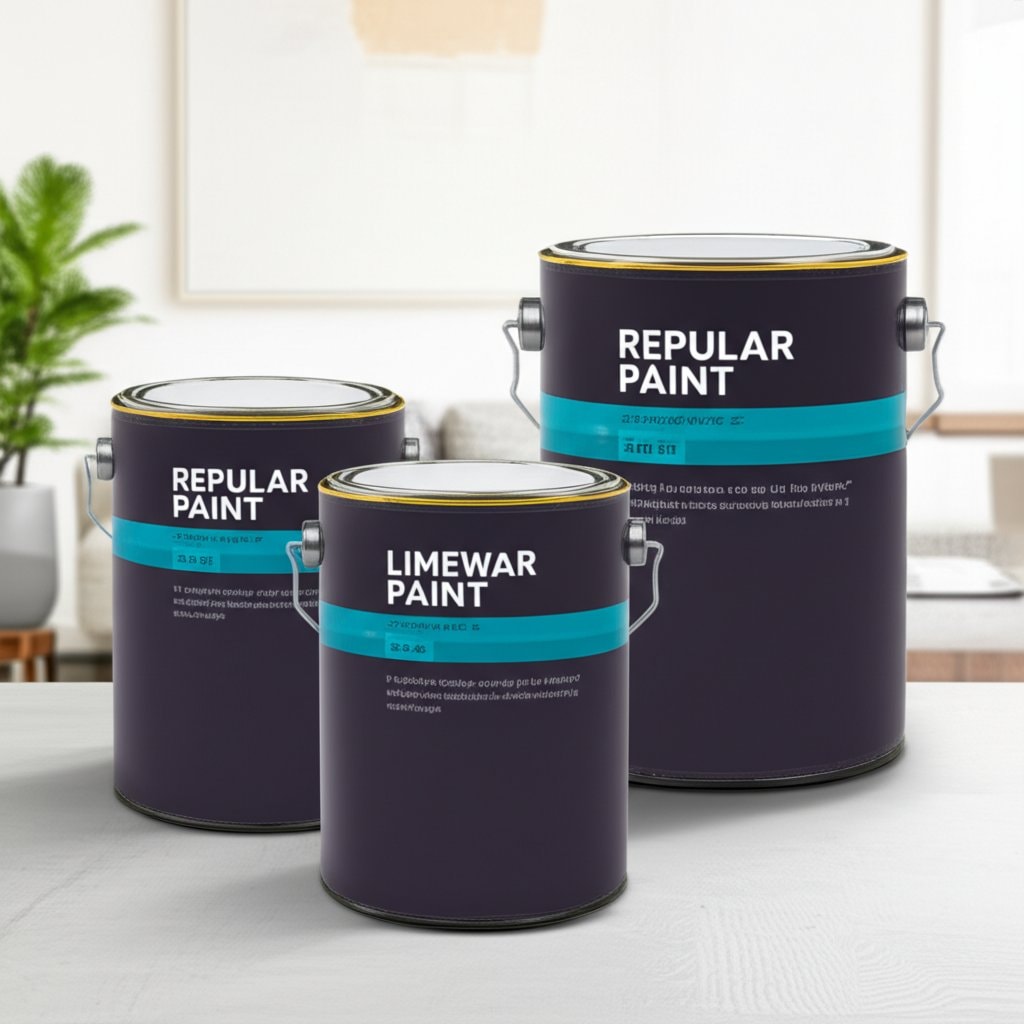Understanding the True Cost of Limewash in 2025
Limewash has gained significant popularity for its soft matte finish, organic texture, and historical appeal. Homeowners and designers often receive quotes that reveal limewash costs three times more than traditional paint. This article examines the factors driving this difference, focusing on aspects beyond fleeting trends.
Key Differences in Materials
Traditional paint consists of synthetic binders, pigments, and fillers designed for broad coverage and ease of use. Limewash begins with lime putty, which undergoes a prolonged curing process involving slaking and aging to achieve stability. This preparation demands specialized storage, handling, and quality assurance, elevating the material's inherent expense.
Coverage represents another critical distinction. One gallon of latex paint covers approximately 350 to 400 square feet with two coats. Limewash penetrates porous substrates such as brick or plaster, requiring multiple applications to achieve uniform absorption and opacity. Professionals recommend three to four coats for optimal results, directly increasing the quantity of product needed and thus the total cost.
The Craft of Application
Applying limewash demands precision and skill, far beyond the simplicity of rolling on standard paint. The process involves brushing in layered strokes, often followed by misting to enhance the material's natural movement and create subtle cloud-like effects. These techniques produce the depth and variation that define limewash's character.
In professional environments, such as high-profile construction projects, application crews emphasize controlled brushwork to avoid visible inconsistencies. Uneven strokes become apparent under various lighting conditions, underscoring the need for experienced applicators. Consequently, labor time extends significantly compared to routine painting, contributing substantially to the overall price.
Benefits of Durability and Longevity
The elevated cost of limewash finds justification in its superior performance over time. Rather than forming a surface film, limewash undergoes a chemical reaction with masonry, calcifying to integrate with the substrate. This bonding prevents peeling and promotes graceful aging, reducing the frequency of maintenance.
Consider the maintenance cycle: conventional paints may require repainting every three to five years, depending on exposure. Limewash, when properly applied and cared for, endures for decades, as evidenced in historic restorations and heritage sites. Initial investment yields savings through extended service life and minimal upkeep.
Options Across Budget Levels
Limewash accommodates various financial considerations through accessible alternatives.
- Budget Approach: Create a limewash-inspired finish using diluted latex paint mixed with mineral pigments. This method lacks the authentic mineral composition but achieves a similar diffused appearance at reduced expense. Apply in thin layers over primed surfaces for best adhesion.
- Mid-Range Choice: Select pre-formulated limewash kits from trusted manufacturers, which include mixing instructions and application guides. These simplify the process for capable DIY enthusiasts, yielding professional-quality results without full contractor involvement.
- Premium Selection: Opt for custom-mixed limewash applied by specialists. This ensures maximum texture variation, color depth, and structural integration, ideal for demanding architectural features.
Such flexibility allows individuals to match their investment to project scope and expertise.
Influences of Supply and Demand
Rising interest in limewash has strained production capacities among suppliers. Sourcing raw lime often involves international imports, compounded by logistical delays and fluctuating transportation costs. Unlike large-scale paint manufacturing, limewash production occurs in smaller batches to preserve quality, limiting availability and inflating prices.
Project experiences highlight this dynamic: securing materials for time-sensitive builds sometimes requires coordination with vendors facing backorders. As media coverage amplifies limewash's appeal in contemporary design, equilibrium between supply and demand remains elusive, sustaining higher costs.
Achieving Visual Excellence
Limewash's allure stems from its ability to elevate spaces through texture and light interaction. In visual media, it mimics natural stone, capturing shadows and concealing minor surface flaws to create dynamic backdrops. This quality extends to residential settings, where even modest applications enhance perceived luxury.
For instance, coating an accent wall or mantel transforms ordinary rooms into sophisticated environments. Compared to alternatives like structural renovations, limewash provides comparable impact at a more contained investment, justifying its premium positioning.
Integrating Limewash into Your Home
Selecting limewash involves evaluating its role as a durable, character-building element. It honors traditional craftsmanship while adapting to modern interiors, offering surfaces that respond to ambient changes over years. Whether through self-application or expert service, limewash enriches living spaces with authentic, evolving beauty.
Natural finishes like limewash demonstrate that enduring quality transcends initial expense. The result is an environment that inspires daily, affirming the wisdom of thoughtful material choices.



